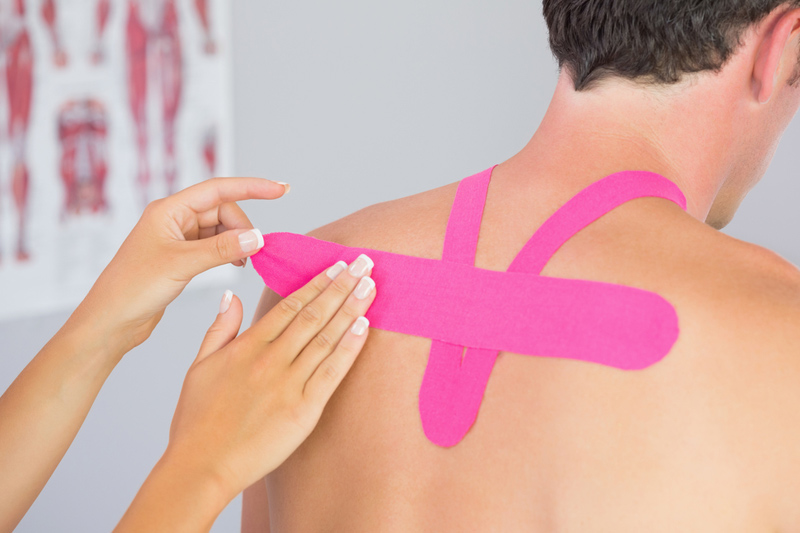Kinesio Taping Specialist
MLC Health Group, located in Reseda, CA, offers Kinesio Taping that relaxes tired muscles suffering from overuse, minimizes pain and inflammation, and supports muscle movement.

Kinesio Taping Q & A
What Is Kinesio Tape?
The Kinesio taping method derives its name from kinesiology, the science of physiology, anatomy, and body mechanics. Its use is based on the principle that the body can heal itself when given appropriate support.
Kinesio taping involves taping over muscles to minimize inflammation and pain, relax overused, tired muscles, and to support free muscle movement. Critical to athletes or “weekend warriors” who are recovering from injury or seeking to avoid it, the taping is nonrestrictive allowing for a full range of motion.
Individuals who have not had proper professional training in the application of Kinesio taping should not seek to use it unattended. We train you how to reach and stretch properly when applying Kinesio tape, so that is beneficial.
Who Can Use Kinesio Tape?
Kinesio tape was developed in Japan over 25 years ago by a chiropractor and is now used around the world by both elite athletes and everyday sports fans. It is used to great effect to resolve headaches, shoulder issues, plantar fasciitis, and gastrocnemius tears. It has almost unlimited potential in aiding the rehabilitation of muscles and avoiding muscle injury. Kinesio tape does not contain any latex and can be worn while bathing or swimming without the need of re-taping for three to five days.
What Is the Process of Kinesio Taping?
When properly used, most people do not even feel it on their body. A physical therapist or sports medicine practitioner lightly stretches a person’s skin to apply the tape for one of two purposes:
For support - tape is applied beginning at the origin of the muscle to where it inserts.
For rehabilitation purposes - tape is stretched in the opposite direction.
The therapist’s goal is to enable muscles to work with proper biomechanics. Taping also aids in proper lymphatic drainage and blood flow while further rehabilitating damaged muscles or aiding in avoiding injury.

